|
This is the 6th (and last) post in blog series on writing speculative science fiction. It’s from a workshop I conducted at Writers & Books in February 2020. The convergence of the social and the tech is what makes a story. Authors project a world into the future, and now create the people who live that future. The character’s movement through this new world is shaped by the tomorrow the author created. Maybe the character will need to overcome the obstacles presented by science or society, perhaps she’ll work with to improve the world, maybe he’ll be the inventor or the catalyst. Instead of explaining this world, it’s best to give clues about it through the character’s interaction with their environment. Take, for example, Offred’s interaction with her room, upon waking, in A Handmaid’s Tale: “When the window is partly open--it only opens partly--the air can come in and make the curtains move. I can sit in the chair, or on the window seat, hands folded, and watch this. Sunlight comes in through the window too and falls on the floor, which is made of wood, in narrow strips, highly polished. I can smell the polish. There's a rug on the floor, oval, of braided rags. This is the kind of touch they like: folk art, archaic, made by women, in their spare time, from things that have no further use. A return to traditional values. Waste not want not. I am not being wasted. Why do I want? On the wall above the chair, a picture, framed but with no glass: a print of flowers, blue irises, watercolor. Flowers are still allowed. Does each of us have the same print, the same chair, the same white curtains, I wonder? Government issue? Think of it as being in the army, said Aunt Lydia.” We can tell, just from this description of this future room, that Offred is trapped because the window doesn’t open. Her picture, ominously, doesn’t have glass. We can take a few guesses as to why. It also makes the reader wonder – who is the “us” who gets government furniture and is there a “them” who doesn’t? The Power of ForesightSocial and scientific speculation combine in essential ways, and the rest of the world is taking notice. You may find yourself speculating on how climate change will change the future of sports and other outdoor activities. If you do, you could end up among the science fiction writers France has hired to take part in its Defense Innovation Agency – a group of writers who create speculative climate change scenarios for the French military.
Whether it’s predicting the future for the military, telling futuristic stories, or philosophizing on the impact of new tech, science fiction is a vital part of the fabric of the present and it helps to weave the tapestry of the future.
0 Comments
This is the #5 post in blog series on writing speculative science fiction. It’s from a workshop I conducted at Writers & Books in February 2020. So, now that I’ve covered scientific speculation, on to the softer kind of predictive writing, based on social trends. Social speculation is less of a projection of where we think science could take us and more of a commentary on our current culture. For example, some people think that the internet makes us narcissistic – so what would a future look like where everyone is a raging narcissist; maybe we’re already there. The science aspect in world-building and social or trend speculations help to flesh out the characters. The tech may be the “why” of their lives, but the social consequences are the “how.” How your future society functions isn’t necessarily based around an emerging tech either. Just like with tech, you can take any social trend that’s happening now and project it into the future. Social speculation is often a way for the author to discuss the status quo without direct commentary. Worried about the looming Vietnam War in the wake of the Second World War, Kurt Vonnegut used a man’s encounter with the humorous alien Tralfamadorians in his novel Slaughterhouse-Five. With the alien’s ability to alter time and he wrote harrowing account of the horrors of modern warfare amid comic interactions with the creatures. Whether you’re imagining the cultural implications of a specific tech – like Gibson’s cyberspace addicted society, or commenting on the direction of trends, akin to Atwood’s commentary on the religious subjugation of women, your characters are uniquely shaped by the futuristic world they inhabit. Just like we’re shaped by the world. Thought Activity: Back to the FuturePart One: The Past There’s a two-part activity I call “Back to the Future,” It plays with time and helps me think about how much society and changes in a few decades. We are somewhat of experts in the community we live in – so imagine describing your current 2020 day, and all the nebulous social constructs and interwoven technologies to someone living in the 1980s. I might say something like – “my phone also has a television and a camera, and I carry it in my hand.” Part Two: The Future Now reverse it. How might somebody 40 years in the future describe their day and their technology? Maybe they’d say – “it’s like your smartphone, but implanted in your visual cortex. It blurs other people’s faces in public to protect privacy.” So, it’s 2060 – walk us through a day, or a character’s day. What tech or trend has advanced, what’s obsolete, what’s brand new? The farther back in history you get, the more you have to explain. How would you describe your smartphone to someone from the Victorian Era? Maybe you’d just say it’s “voices and pictures from someone very far away.” And on the other side – how would someone 200 years in the future describe their world to you? – Probably with similar vagueness and logical leaps. When speculating, it’s important to remember that you’re an expert on the present and near future, but the farther you get away from current society, the more unfamiliar your constructed world will become.
|
Alison Lyke
Categories
All
Archives
November 2022
|
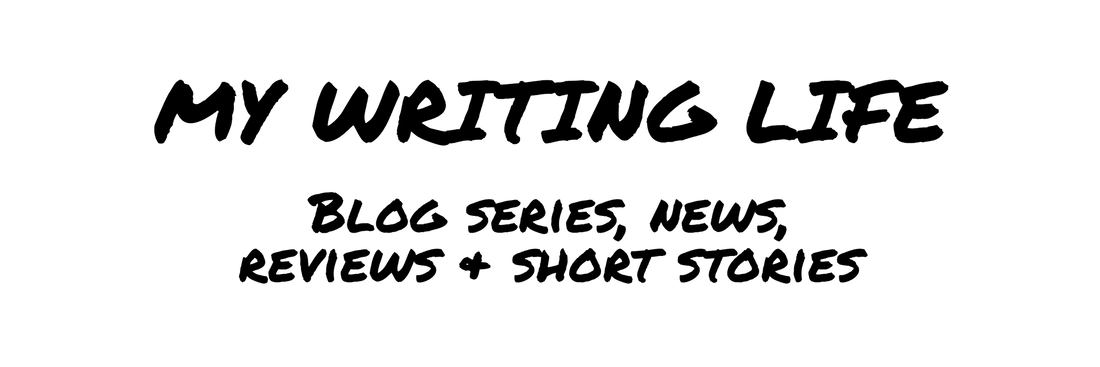
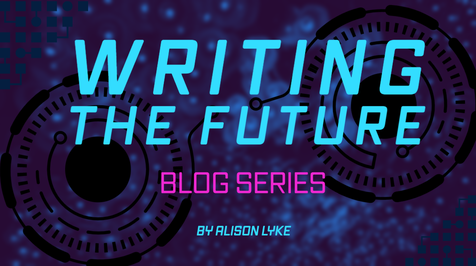
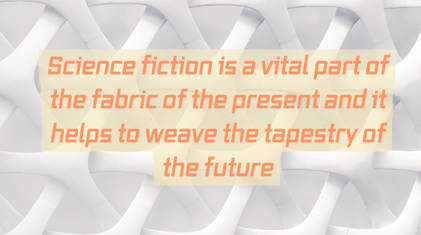
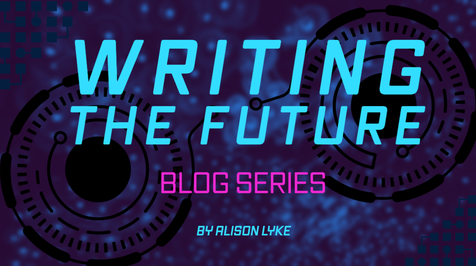
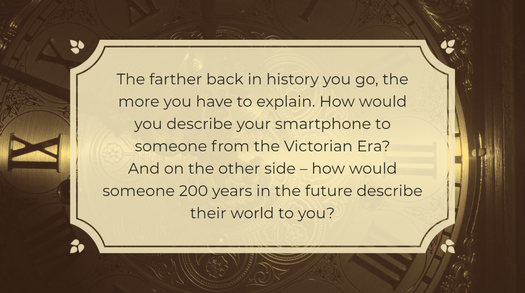
 RSS Feed
RSS Feed
